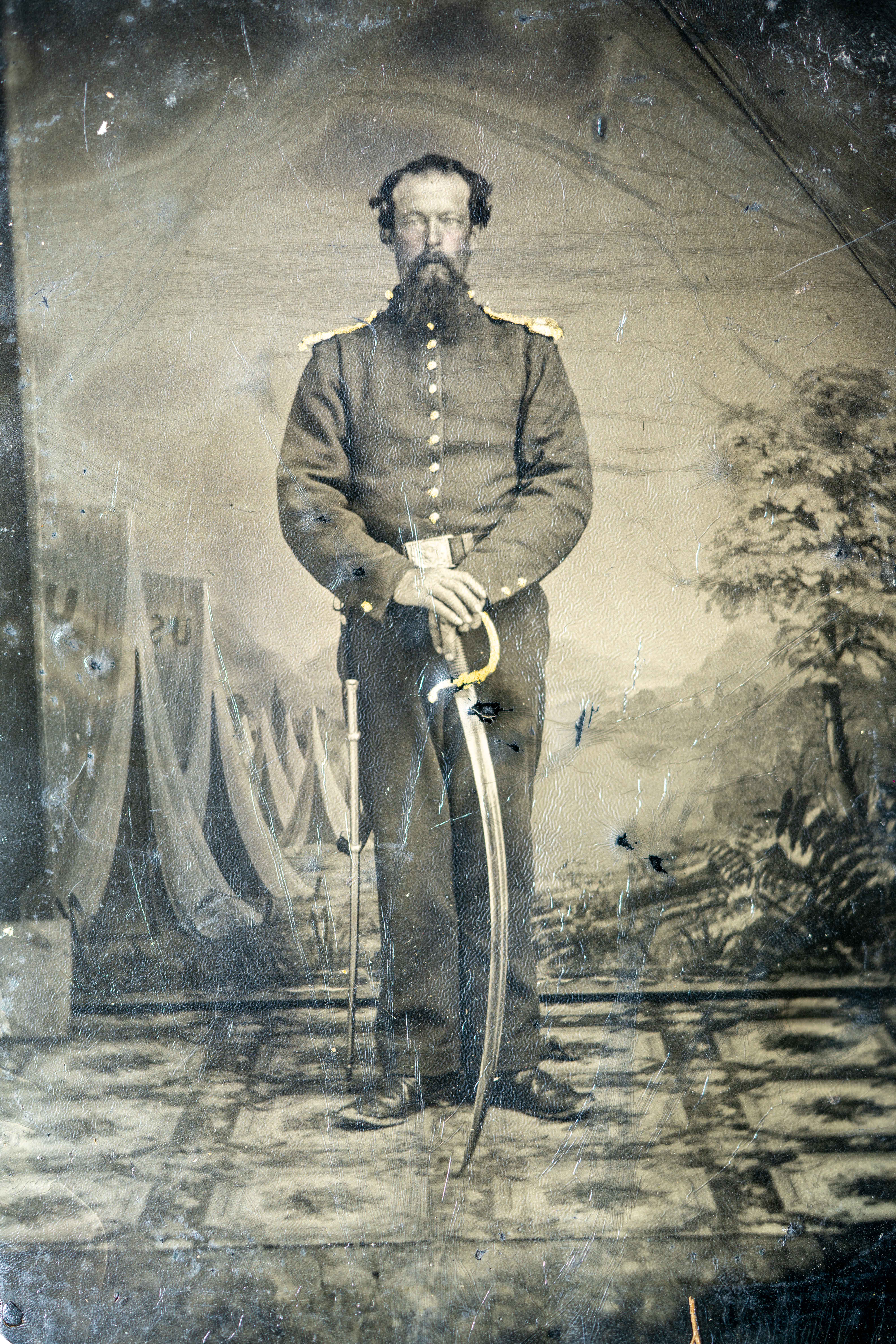In the history of photography, few formats capture the imagination quite like the tintype. From bustling Civil War camps to traveling fairs and frontier towns, tintypes were once the most accessible way for everyday people to capture their likeness. Affordable, durable, and quick to produce, tintypes democratized photography in the 19th century and left behind a wealth of cultural history.
For many families, tintypes are discovered in old trunks, albums, or keepsake boxes—often the only surviving portrait of an ancestor. Preserving these fragile heirlooms ensures they remain part of your family’s story.
What Exactly Is a Tintype?
Despite the name, tintypes were not made of tin. They were created on thin sheets of iron coated with a dark enamel or lacquer. A light-sensitive collodion emulsion was applied to the surface, exposed in the camera, and developed within minutes. The result was a direct positive image—the tintype itself was the finished photograph, without needing prints from a negative.
This speed and affordability made tintypes incredibly popular from the 1850s through the early 1900s.
Tintype Sizes
Tintypes came in a variety of sizes, reflecting the era’s portrait traditions. Some of the most common included:
- Full plate (~6.5 × 8.5 inches): Larger, formal portraits.
- Half plate (~4.25 × 5.5 inches): Popular mid-sized images.
- Quarter plate (~3.25 × 4.25 inches): Individual or couple portraits.
- Sixth plate (~2.75 × 3.25 inches): A favorite among Civil War soldiers—small enough for a pocket or locket.
- Ninth plate (~2 × 2.5 inches): Tiny portraits, often carried in jewelry or wallets.
Because tintypes were inexpensive, photographers sometimes offered multiple small portraits on one larger plate, later cut apart and shared like keepsakes.
If you’ve inherited a small portrait in a locket or case, chances are it’s a sixth or ninth plate tintype—formats beloved by Civil War soldiers and their families.
The Technology Behind Tintypes
Tintypes relied on the wet collodion process, similar to wet plate glass negatives. Collodion (a mixture of nitrocellulose, ether, and alcohol) was poured onto the iron plate, sensitized with silver nitrate, then exposed while still wet. After development and fixing, plates were varnished for protection.
The process could be completed in minutes. At fairs, soldiers’ camps, and traveling studios, sitters could pose, wait a short while, and walk away with a finished portrait that same day.
Today, professional services like Scanthology can digitize tintypes using non-contact methods, capturing every detail while keeping the originals safe.
Tintypes in the Civil War
By the 1860s, tintypes had become the everyman’s photograph. While daguerreotypes and ambrotypes were still in use, they were costly and delicate. Tintypes were:
- Quick: Made in just minutes.
- Affordable: A fraction of the cost of other formats.
- Durable: Tough enough to withstand life in a pocket or knapsack.
Photographers followed armies into the field, setting up portable studios. Soldiers posed in uniform, often holding rifles or flags, creating images that were both personal mementos and symbols of service.
These portraits were often mailed home to anxious families—many of which survive today as cherished heirlooms
Most wartime tintypes were sixth or ninth plate size, easily slipped into a locket or tucked into a Bible. Families cherished these intimate portraits, often the only image they ever had of a loved one in uniform.
Why Tintypes Mattered
Tintypes marked the first time photography was truly within reach of the masses. They documented not just the wealthy or famous, but everyday people—farmers, shopkeepers, soldiers, children, and carnival-goers.
From Civil War soldiers to 19th-century fairgrounds, preserved tintypes offer us a window into ordinary life, making them some of the most democratic artifacts in the history of photography.
Whether you find one tintype or dozens, each represents a unique snapshot of family history. Preserving them through careful storage and digitization ensures they can be shared with future generations.
FAQ
Are tintypes valuable?
Tintypes hold significant historical and cultural value, particularly those tied to the Civil War or early American life. Monetary value varies, but their true worth is in their uniqueness as one-of-a-kind family heirlooms.
How can I tell if I have a tintype?
Tintypes are made of thin iron, not tin. A quick test is that a magnet will cling to them, unlike glass ambrotypes or daguerreotypes. They are also often very small—sixth plate or ninth plate sizes—and may show signs of rust or bending.
What’s the best way to store tintypes at home?
Keep tintypes flat, in acid-free sleeves or archival boxes, away from heat and humidity. Avoid stacking them loosely, and never try to peel them out of old albums without guidance, as this can cause surface loss.
Can tintypes be digitized safely?
Yes. Modern non-contact scanning methods allow tintypes to be digitized without putting pressure on the fragile emulsion. Digitization ensures the images are preserved, easy to share with family, and safe from further deterioration.
Ready to Preserve Your Family’s History?
If you’ve uncovered tintype photos—or aren’t sure what type they are—schedule a complimentary consultation with a Scanthologist. We’ll help you understand what you have, answer your questions, and guide you toward safe preservation—whether you choose to work with us or not.
